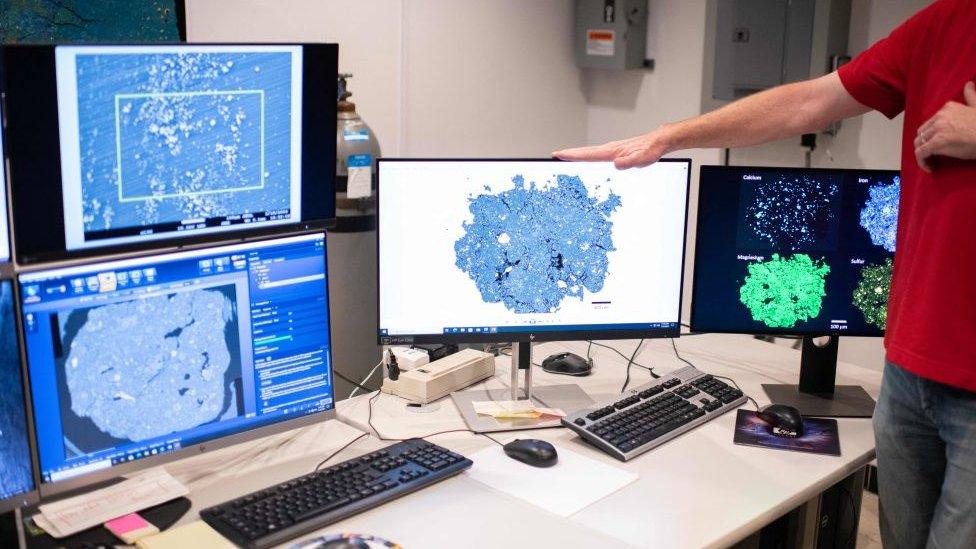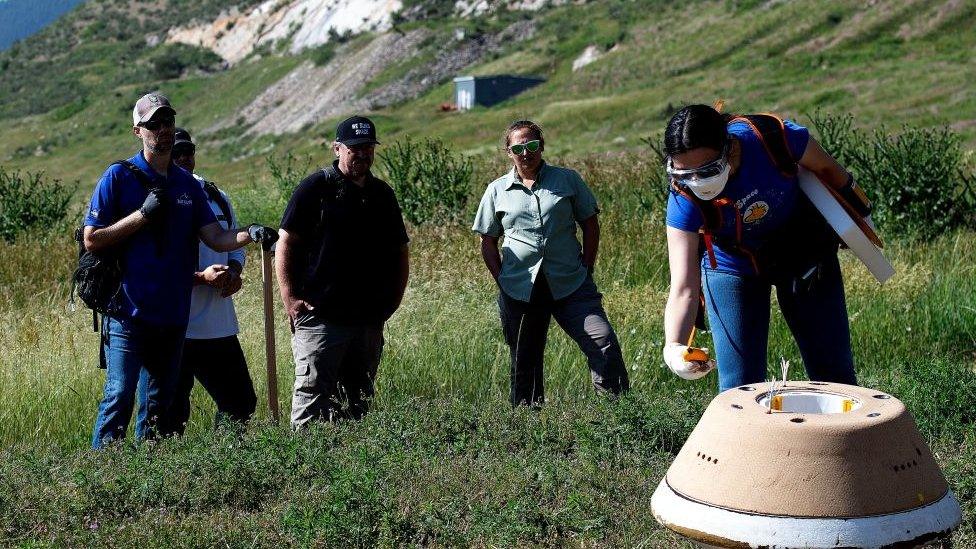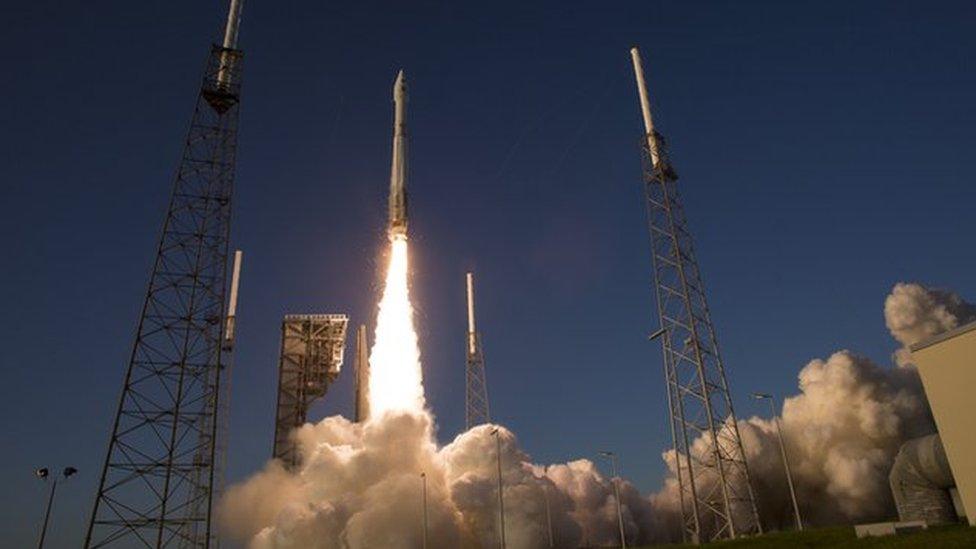Osiris-Rex: Nasa capsule returning to Earth with asteroid dust
- Published
- comments

Scientists at Nasa are preparing for the return of an exciting sample from space
Nasa's OSIRIS-REx capsule is heading back to Earth and it's got some special cargo on board.
It's carrying a handful of dust that was taken from a mountain-sized asteroid called Bennu and it could help scientists answer the age-old question: where do we come from?
The OSIRIS-REx spacecraft left earth in October 2016, and is due to touch down in Utah in the US on Sunday afternoon.
Nasa says it has "pristine" samples of asteroid Bennu, which are now going to be studied in a lab.
What is asteroid Bennu?

Asteroid Bennu is a very big clump of rock - with an average diameter of just over 490 metres. It's pretty heavy as well, weighing around 78 billion kilos.
Nasa says the asteroid probably broke off a much bigger one as far as 2 billion years ago. Originally forming in the asteroid belt between Mars and Jupiter.
Because Bennu looks so similar to asteroids found on Earth scientists think it could contain some of the universe's oldest materials. This is why Nasa is so keen to investigate it - it could teach us more about where we come from.
The space agency said the "pristine material from Bennu" will offer generations of scientists a window into the time when the Sun and planets were forming - around 4.5 billion years ago.
Asteroids are big chunks of rock which float though space and orbit the Sun.
They are much smaller than planets, and can vary in size.
There are lots of asteroids in our solar system, and most of them are in the main asteroid belt, which floats between Mars and Jupiter.
What has OSIRIS-REx been up to?
Success! Ten-second space mission's "incredible feat"
Nasa sent a spacecraft up into the sky in 2016. The mission was to study asteroid Bennu, and to bring back a sample to Earth. It was the first time ever that Nasa sent a spacecraft to make contact with an asteroid.
OSIRIS-REx had a tricky time landing on the asteroid's gravelly surface, but eventually made it onto the rock.
The sample was captured on 20 October 2020 after two years mapping where to take it from.

Nasa has been holding rehearsals in preparation for bringing the asteroid sample home after it lands
Nasa's craft is currently returning to Earth, and when the spacecraft gets to around 63,000 miles above the planet, it will release the capsule containing the precious sample of rock from the asteroid.
A heat shield and parachute will make sure the capsule has a gentle touchdown in Utah's West Desert.

This is asteroid Bennu. To imagine the size of it - the large, light-coloured boulder just below the centre of the picture is about 24 feet (7.4 meters) wide, which is about half the width of a basketball court.
Professor Dante Lauretta is the principal investigator on the mission. He said: "When we get the 250g (9oz) of asteroid Bennu back on Earth, we'll be looking at material that existed before our planet, maybe even some grains that existed before our Solar System.
"We're trying to piece together our beginnings. How did the Earth form and why is it a habitable world? Where did the oceans get their water; where did the air in our atmosphere come from; and most importantly, what is the source of the organic molecules that make up all life on Earth?"
- Published21 March 2019
- Published9 September 2016

